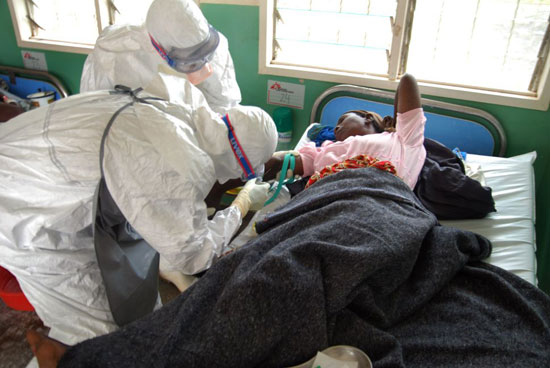
ADDIS ABABA – Ethiopia has confirmed its first outbreak of Marburg virus disease (MVD), a deadly hemorrhagic fever akin to Ebola.
As of November 14, 2025, nine cases had been detected in Jinka town, in the Southern Region.
An initial alert of suspected viral hemorrhagic fever reached the Africa Centres for Disease Control and Prevention (Africa CDC) on Wednesday, just two days before laboratory confirmation from Ethiopia’s National Reference Laboratory. Symptoms include high fever, severe headaches, vomiting, diarrhea, and profuse bleeding from multiple body openings. The virus, transmitted through direct contact with infected bodily fluids or contaminated surfaces, has an incubation period of up to 21 days, allowing silent spread in communities like Jinka’s.
Ethiopian health authorities quickly established isolation wards, contact tracing teams fanned out to monitor over 100 potential exposures, and community sensitization campaigns urged handwashing, safe burials, and avoidance of bushmeat.
“We are leaving no stone unturned,” declared Dr. Lia Tadesse, Ethiopia’s Health Minister, in a press briefing.
Africa CDC has dispatched experts to bolster risk assessments, while the World Health Organization (WHO), led by Director-General Tedros Adhanom Ghebreyesus, an Ethiopian native, vowed full logistical support. Tedros, who confirmed the cases personally, emphasized, “Swift detection is our shield against catastrophe.”
Marburg, named after the German city where it first surfaced in 1967, lurks in fruit bats, spilling over to humans via caves or mines. With no approved vaccine or antiviral—only supportive care like rehydration boosting survival from a grim 25-80% fatality rate.
Neighboring Kenya and South Sudan are ramping up surveillance, fearing cross-border spread via trade routes.
Uganda experienced Marburg in 2017 in Kween District when a resident’s blood tested positive for Marburg, traced to prolonged exposure in bat-infested caves during local activities. Three cases and three deaths followed, contained only through rapid isolation and community sensitization. In the Democratic Republic of Congo’s 1998-2000 epidemic ignited among illegal gold miners in Durba and Watsa, where digging into bat-roosting mines caused the virus, claiming lives of 128 of the 154 affected people.